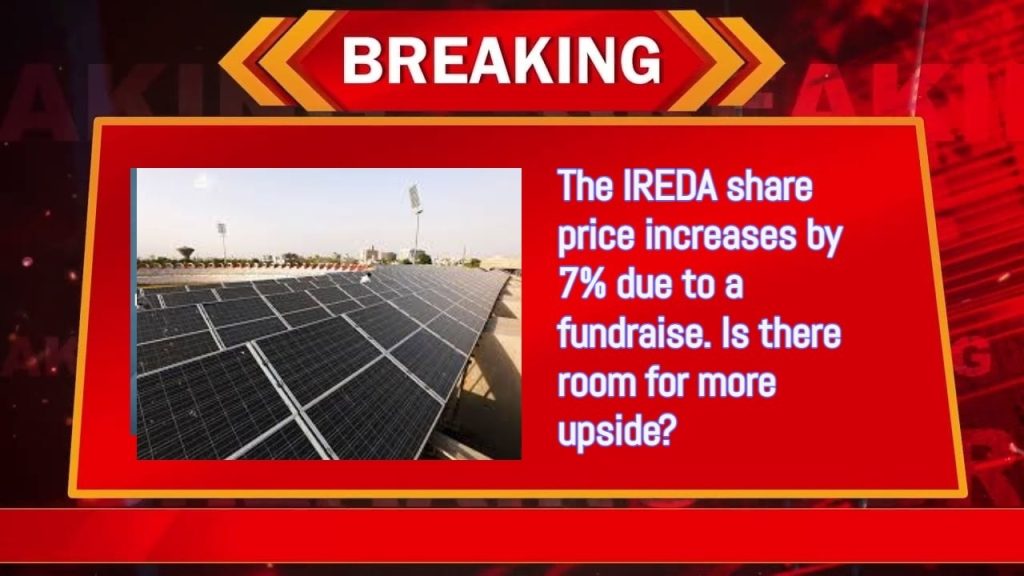During its meeting on August 29, the board of the Indian Renewable Energy Development Agency (IREDA) is expected to consider a proposal to raise Rs 4,500 crore in one or more tranches through a follow-on public offer (FPO) or other modes. As a result, shares of IREDA surged nearly 9% to Rs 259.3 in Thursday’s trade on the BSE.
IREDA disclosed its plan to raise funds through preferred stock offerings (PPOs), rights issues, qualified institutional placements (QIPs), and other means in a report it made to the exchanges on Wednesday during post-market hours. The application also mentioned the possibility of a combination of these. The stock was trading 6.8% higher at Rs 255 on the BSE at 10:09 am.
Increase In Loan
Since going public on November 29, 2023, the stock has increased by a staggering 700% over its issue price of Rs 32. For the quarter that ended on June 30, 2024, IREDA reported a net profit of Rs 384 crore, a 30% increase over the Rs 295 crore reported in the same time the previous year.
During the quarter, activities brought in Rs 1.502 crore, compared to Rs 1,144 crore during the same period in the previous fiscal year. It was a more than 32% increase. According to the company’s registration with the markets, the state-run NBFC approved a loan for Rs 9,210 crore as opposed to 1,892 crore, an increase of 387%. The amount of loans disbursed was Rs 5,326 crore.
Non Performing Assets
The loan book increased by 34% to Rs 63,207 crore as of June 30, 2024, from Rs 47,207 crore in Q1FY24. According to the firm filing, the net non-performing assets (NPAs) decreased by 41.01% in percentage terms, standing at 0.95% as opposed to 1.61%.
Based on data from Trendlyne, the stock’s average target price is Rs 230, indicating a 10% decline from the current market levels. Two analysts have recommended a “Hold” for the stock in unanimity.
Technically speaking, the company’s relative strength index (RSI) is 47, indicating that it is neither trading in the overbought or oversold areas. At the moment, IREDA’s price is above its 10-, 20-, 100-, 150-, and 200-day simple moving averages.

